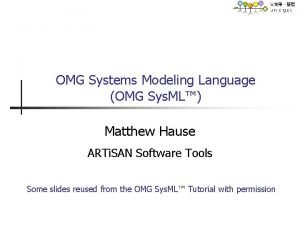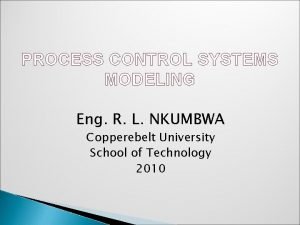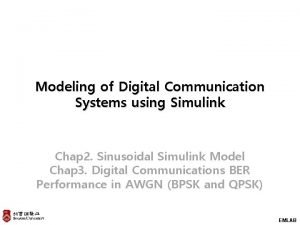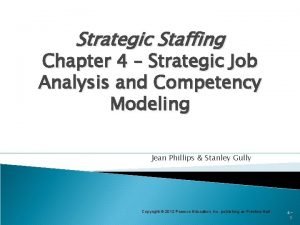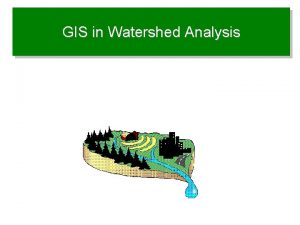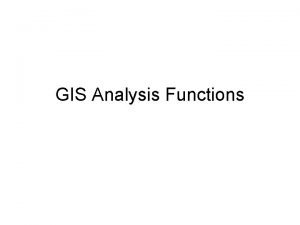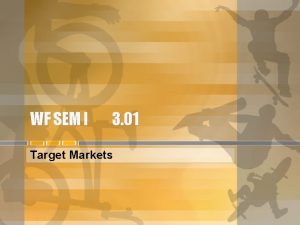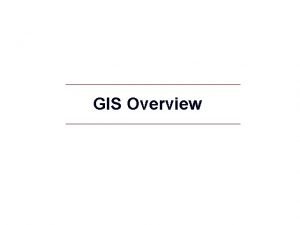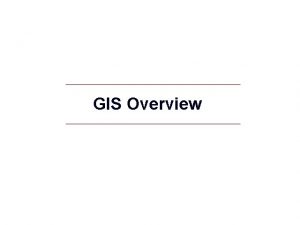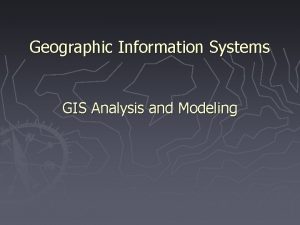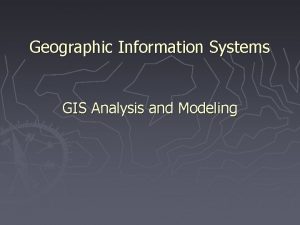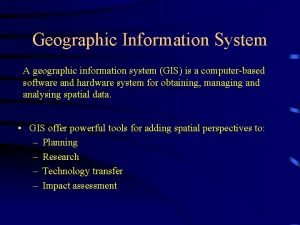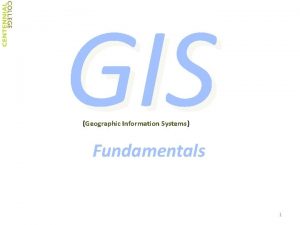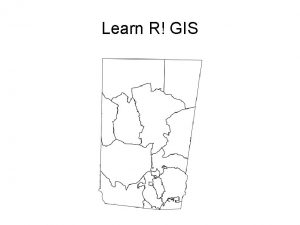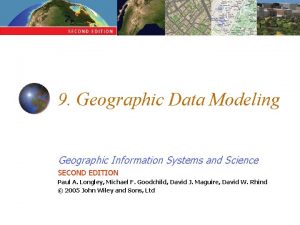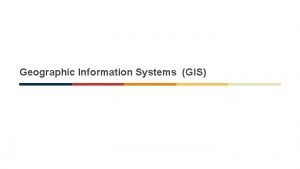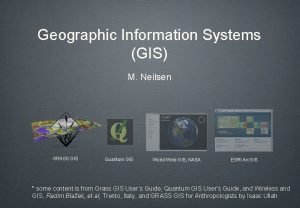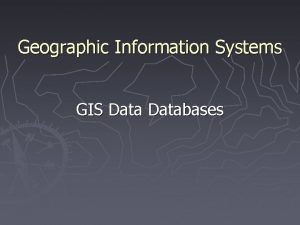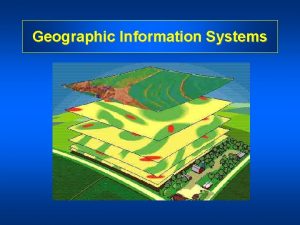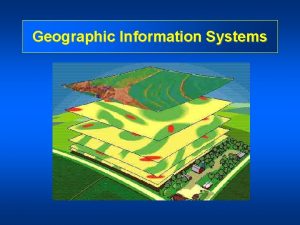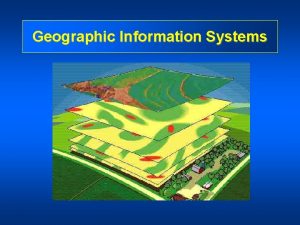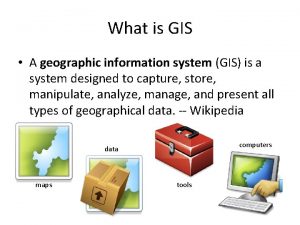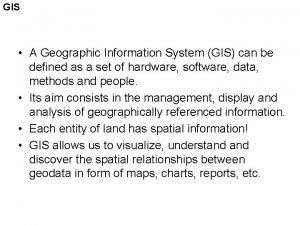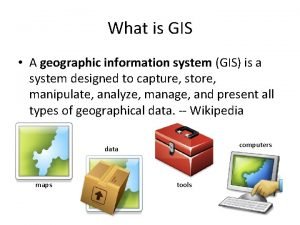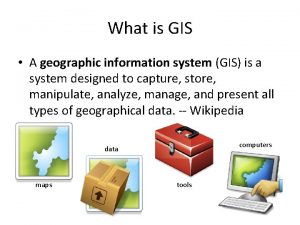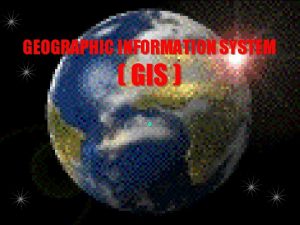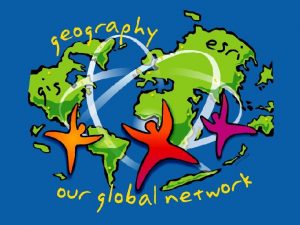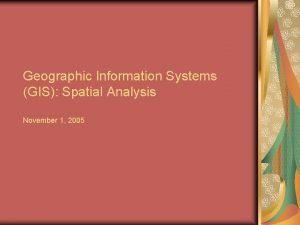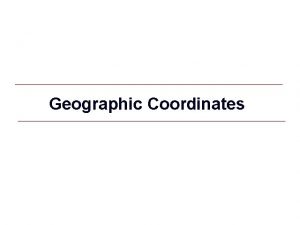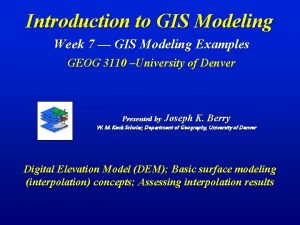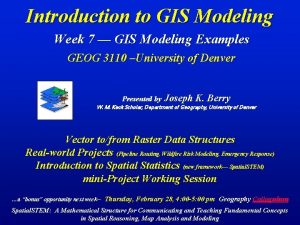Geographic Information Systems GIS Analysis and Modeling 11































- Slides: 31

Geographic Information Systems GIS Analysis and Modeling

11. Spatial Interpolation ► Predict the unknown value at a location using the known values at surrounding area Linear interpolation ► Thiessen polygon ► Inverse distance weighted ► Trend surface ► Fourier series ► Kriging ►

11. Spatial Interpolation ► Linear interpolation Known values Known and predicted values after interpolation


11. Spatial Interpolation ► Thiessen polygon - Defines area of influence around a point in a way that polygon boundaries are equidistant to neighboring points

Construction of Polygon + 130 + 200 + 150 + 180 + 130 Polygon of influence for x=180

Construction of Polygon. . + 130 + 200 + 150 + 180 + 130 Draw line segments between x and other points

Construction of Polygon. . + 130 + 200 + 150 + 180 + 130 Find the midpoint and bisect the lines.

Construction of Polygon. . + 130 + 200 + 150 + 180 + 130 Extend the bisecting lines till adjacent ones meet.

Construction of Polygon. . + 130 + 200 + 150 + 180 + 130 Continue this process.

Obstetrical Delivery Hospital Regions (Constructed Using Thiessen Polygons): North Carolina, 1989 This map uses Thiessen polygons to construct regions: in this case, obstetrical delivery hospital regions. This technique can be utilized with little technology, using nodal points to construct polygons and, ultimately, regions. Source: “Using Geographic Methods to Understand Health Issues, ” U. S. Department of Health and Human Services http: //geography. sdsu. edu/People/Pages/jankowski/public_html/Lect 811. ppt#276, 2, What is Spatial Interpolation?

11. Interpolation – Proximal. . ► http: //gizmodo. com/5884464/

11. Spatial Interpolation. . ► Inverse Distance Weighted - IDW works by using a weight based on the distances from an unknown value to known values Arthur Lambor, Cornel University © Paul Bolstad, GIS Fundamentals

11. Spatial Interpolation ► . . Trend surface - Polynomial regression to fit a least-square surface to the input points First-order (linear) trend surface Second-order (quadratic) trend surface http: //geography. sdsu. edu/People/Pages/jankowski/public_html/Lect 811. ppt#276, 2, What is Spatial Interpolation?

Trends of one, two, and three independent variables for polynomial equations of the first, second, and third orders (after Harbaugh, 1964).

11. Spatial Interpolation ► Fourier series Single harmonic in X 1 direction Two harmonics in X 1 direction Single harmonic in both X 1 and X 2 directions Two harmonics in both directions


11. Spatial Interpolation. . ► Kriging - It takes one step further from inverse distance weighted interpolation because it accounts for not only the distances between a location with unknown value to the locations with known values, but also distances between the location with known values Arthur Lambor, Cornel University

Theissen Arthur Lambor, Cornel University

Inverse Distance Weighting Arthur Lambor, Cornel University

Kriging Arthur Lambor, Cornel University

12. Network Analysis ► A network is a set of interconnected lines making up a set of features through which resources can flow The shortest path problem ► The traveling salesperson problem ► ► Location-allocation

12. The Shortest Path Problem ► An evaluation of links and turns required to traverse a network between required stops ► It can be the shortest, fastest, or least-costly route between any number of origins and destinations, with any number of intermediate points

The Shortest Path Problem ► Shortest and fastest routes http: //www. caliper. com/Trans. CAD/Application. Modules. htm

The Shortest Path Problem ► Traffic assignment http: //www. caliper. com/Trans. CAD/Application. Modules. htm

12. The Traveling Salesperson Problem ► An evaluation of best sequence to visit each of a set of stops and the best route between the stops http: //www. caliper. com/Trans. CAD/Application. Modules. htm

Vehicle Routing/Dispatching ► Pickup and delivery routing http: //www. caliper. com/Trans. CAD/Application. Modules. htm

12. Location-Allocation ► A match between supply and demand involving the movement of people, goods, information, and services Locating schools within 30 min walking distance for children Determining what areas are within 10 minutes of a fire station http: //www. sdsmt. edu/online-courses/geology/mprice/geo 416/lecture 9. ppt

Location Allocation ► Evaluate possible facility locations http: //www. caliper. com/Trans. CAD/Application. Modules. htm

Trip Generation/Production ► Estimate the number of trips, by purpose, that are produced or originate in each zone of a study area http: //www. caliper. com/Trans. CAD/Application. Modules. htm

Readings ► Chapter 5, 6, 9, 10
 Manufacturing systems modeling and analysis
Manufacturing systems modeling and analysis Helen erickson biography
Helen erickson biography Relational vs dimensional data modeling
Relational vs dimensional data modeling Omg systems modeling language
Omg systems modeling language Mathematical modelling of electrical systems
Mathematical modelling of electrical systems Control systems modeling
Control systems modeling Modeling of digital communication systems using simulink
Modeling of digital communication systems using simulink Modeling of digital communication systems using simulink
Modeling of digital communication systems using simulink In a global information system high coordination
In a global information system high coordination Simulation kelton
Simulation kelton Dfd chapter 5
Dfd chapter 5 Requirements modeling in system analysis and design
Requirements modeling in system analysis and design Job analysis vs competency modeling
Job analysis vs competency modeling Job rewards matrix
Job rewards matrix National building information modeling standard
National building information modeling standard Ipd ppt
Ipd ppt Gis watershed analysis
Gis watershed analysis Gis analysis functions
Gis analysis functions Gis analysis functions
Gis analysis functions Product advertisements are advertisements that focus on
Product advertisements are advertisements that focus on Mass marketing segmentation
Mass marketing segmentation Pros and cons of geographic segmentation
Pros and cons of geographic segmentation Demographic geographic psychographic
Demographic geographic psychographic Decision support systems and intelligent systems
Decision support systems and intelligent systems Phases of system analysis and design
Phases of system analysis and design Spontaneous generation in data flow diagram
Spontaneous generation in data flow diagram Linear and quadratic functions and modeling
Linear and quadratic functions and modeling Typical process description tools include
Typical process description tools include Managing and using information systems
Managing and using information systems Social issues in mis
Social issues in mis Information systems and communication technologies quiz
Information systems and communication technologies quiz Ethical and social issues in information system
Ethical and social issues in information system



